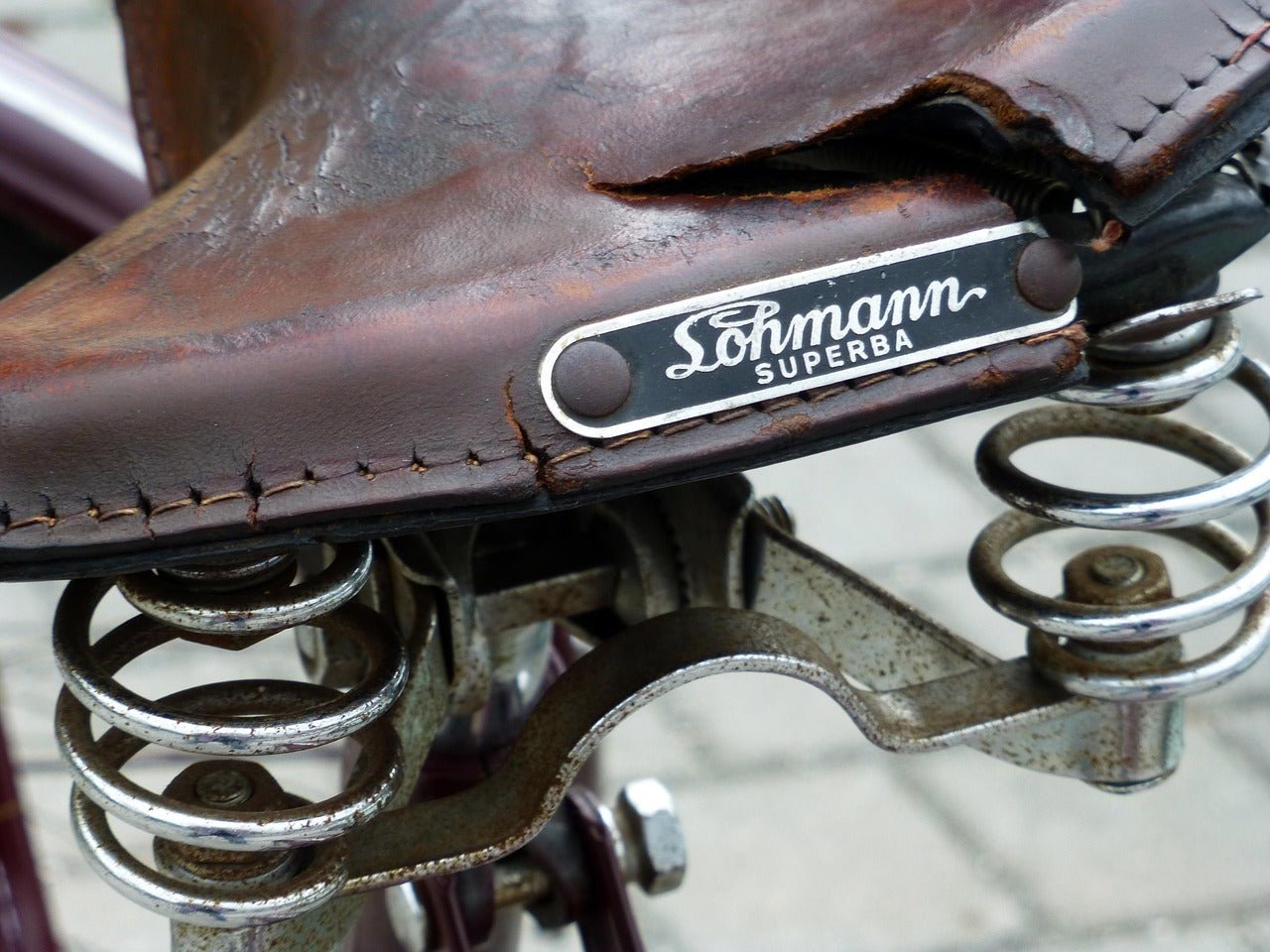Leather bicycle seats, often praised for their durability and classic aesthetic, require proper maintenance to retain their quality over time. Unlike synthetic saddles, leather bike seats naturally conform to a rider’s shape, providing unmatched comfort. However, without proper care, leather saddles can dry out, crack, and deteriorate. This compromises their appearance, comfort, and longevity.
Understanding the causes of leather degradation and implementing a proper care routine will ensure that your bicycle seat remains in excellent condition for years. This guide will take you through the best practices for cleaning, conditioning, and protecting your leather saddle, as well as common mistakes to avoid and advanced maintenance tips.
Understanding Leather Wear and Tear
Leather is a natural material derived from animal hide, consisting of fibers that allow it to be flexible and durable. However, leather is porous, meaning it absorbs and loses moisture over time. This property makes it particularly vulnerable to environmental conditions.
Factors Leading to Leather Deterioration
-
Exposure to Sunlight: Ultraviolet (UV) rays break down the fibers in leather, causing it to dry out and fade over time.
-
Fluctuations in Temperature and Humidity: Excessive heat and dry air accelerate the loss of natural oils, making the leather brittle.
-
Moisture and Water Damage: Prolonged exposure to rain or humidity can cause mold growth and structural weakening.
-
Dirt and Sweat Accumulation: Sweat and grime penetrate leather, leading to the breakdown of its natural structure.
-
Lack of Proper Maintenance: Failure to clean, condition, and protect the saddle leads to premature deterioration.
Understanding these factors is the first step in preventing leather seats from drying out and cracking.
Preventative Measures for Leather Longevity
1. Routine Cleaning
Regular cleaning is crucial for maintaining leather’s integrity. Dust, dirt, and sweat can accumulate over time, leading to wear and tear.
How to Clean a Leather Bicycle Seat
Materials Needed:
-
Soft, lint-free cloth or microfiber towel
-
Mild leather cleaner or a mixture of water and saddle soap
-
Soft-bristle brush (for stubborn dirt)
Steps:
-
Dampen the cloth with a small amount of leather cleaner.
-
Gently wipe the surface of the leather, removing dirt and grime.
-
For tough dirt, use a soft-bristle brush and work in circular motions.
-
Wipe down with a clean, dry cloth to remove excess moisture.
-
Let the saddle air dry naturally—avoid direct sunlight or heat sources.
2. Conditioning: Keeping Leather Moisturized
Leather, like skin, requires hydration to remain supple and resistant to cracking. Conditioning helps restore lost oils and prevents brittleness.
How to Condition a Leather Bike Seat
Materials Needed:
-
Leather conditioner (preferably containing natural oils and waxes)
-
Soft cloth or applicator pad
Steps:
-
Apply a small amount of conditioner to the cloth or applicator.
-
Rub the conditioner into the leather using circular motions, ensuring full coverage.
-
Let the conditioner absorb for the recommended time (as per product instructions).
-
Buff off excess conditioner with a clean, dry cloth.
3. Protecting from Environmental Damage
Since leather bike seats are constantly exposed to outdoor elements, taking protective measures is essential.
-
Use a Seat Cover: When not in use, cover your saddle to shield it from rain, dust, and UV rays.
-
Apply a Leather Protectant: Use a UV-protectant spray designed for leather to prevent sun damage.
-
Store Indoors: If possible, park your bike indoors or in a shaded area to minimize exposure to extreme weather.
Step-by-Step Guide to Caring for Your Leather Bike Seat
Following a structured maintenance routine will keep your leather saddle in optimal condition.
1. Regular Cleaning Schedule
-
Light cleaning: After every ride, wipe down the saddle with a dry microfiber cloth.
-
Deep cleaning: Perform a thorough clean once a month using leather cleaner and a soft brush.
2. Conditioning Frequency
-
Moderate climates: Condition every 3-4 months.
-
Hot and dry climates: Condition every 1-2 months.
-
Cold and humid climates: Condition every 2-3 months.
3. Seasonal Protection
-
Summer: Use UV protectants and store in shaded areas.
-
Winter: Keep indoors to avoid freezing temperatures that can stiffen leather.
-
Rainy Seasons: Apply a water-resistant leather balm.
Common Mistakes to Avoid in Leather Care
Avoid these common leather care mistakes:
-
Using Harsh Chemicals – Avoid alcohol-based cleaners, which strip natural oils.
-
Skipping Conditioning – Lack of moisture accelerates drying and cracking.
-
Over-conditioning – Too much conditioner can make leather too soft, reducing durability.
-
Not Drying Properly – Never dry leather using a hairdryer or direct sunlight, as it can cause shrinkage.
-
Neglecting Protection – Failing to shield leather from sun and moisture shortens its lifespan.
Advanced Tips for Leather Seat Maintenance
Professional Maintenance
For deeply worn or cracked leather, consider professional restoration services. Leather care professionals have specialized tools and treatments to revive damaged leather.
Minor Repairs
If minor cracks appear, apply a leather repair balm to restore elasticity and prevent further damage.
Product Recommendations
Selecting the right products is essential for maintaining a leather saddle. Look for:
-
pH-balanced leather cleaners – Prevents drying and discoloration.
-
Natural leather conditioners – Maintains moisture and prevents stiffness.
-
UV protectants – Shields from harmful sun exposure.
Proper care ensures that leather bicycle seats last for years while maintaining their comfort and aesthetic appeal. Regular cleaning, conditioning, and protection from environmental factors are key to preventing drying and cracking. Using high-quality leather care products can enhance the effectiveness of your maintenance routine.
Pecard Leather Care offers premium leather maintenance products, including conditioners and weatherproofing solutions, ideal for bicycle saddles. Investing in quality care products can significantly extend the life of your leather saddle.
FAQs
1. How often should I condition my leather bike seat?
Conditioning every 3-6 months is recommended. Increase frequency in dry climates.
2. Can I use household cleaners on my leather saddle?
No, household cleaners often contain harsh chemicals that damage leather. Use a specialized leather cleaner.
3. What should I do if my saddle gets wet?
Pat it dry with a soft cloth and allow it to air dry naturally. Avoid heat sources.
4. How do I prevent my leather seat from fading?
Use a UV protectant spray and store the bike in shaded areas.
5. What is the best way to fix minor cracks?
Use a leather repair balm to restore suppleness and prevent further damage. For long-term leather care, Pecard Leather Care provides top-tier leather maintenance products to keep your saddle in peak condition.






